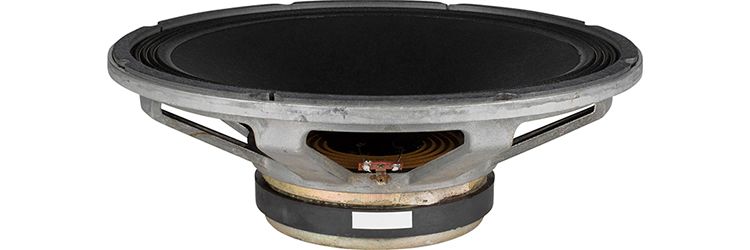LOUDSPEAKER POWER SPECIFICATIONS.

Loudspeaker drivers convert electrical power into acoustic power by means of an electro-magnetic process: a coil hovers in a magnetic field, generated by a fixed magnet, and an electric alternating current through the coil makes it move up and down. For low-power loudspeaker drivers, ‘ferro-magnetic’ materials are used for the magnet; for more powerful loudspeakers, scarcer - and therefore more expensive - Neodymium magnets are used. In both cases, the moving coil is attached to a cone made of paper or plastic, which transmits pressure waves into the air. A wooden or plastic cabinet is built around the driver to optimise the electric to acoustic power conversion process and to shape the response in frequency range and dispersion.
Loudspeakers come in many types and manufacturers face the task of specifying their properties for buyers to make a choice. These properties include sensitivity (a loudspeaker’s efficiency of the power conversion), frequency range and power rating, amongst others. Of these properties, the third answers the most frequently asked question about loudspeakers - ‘how loud can it go?’
A subjective assessment, such as saying ‘this speaker is really loud’, doesn't mean anything without a reference and scale. Therefore, over the years, loudspeaker manufacturers have tried to introduce objective specifications to indicate the power that a loudspeaker can handle. In these specifications, you may find adjectives to the word ‘power’ such as ‘program’, ‘music’, ‘noise’, ‘peak’, ‘continuous’ and more. What do you make of these and how do such specifications help us to make a purchase decision and select a matching power amplifier?
It helps that two standardisation organisations have published power measurement methods for loudspeakers: the International Electro-technical Commission (IEC) and the Audio Engineering Society (AES). Their methods are respectively published under the titles ‘IEC60268 part 5’ and ‘AES2-2002. Both use a pink noise signal to measure the maximum power that a loudspeaker driver can handle, applying low pass and high pass filters, depending on the conditions. The noise signal represents a ‘worst case scenario’ crest factor (the difference between the noise signal’s peak and average level) of 6dB, where most live music has a crest factor below 6dB. The test noise signal is applied to the loudspeaker driver for a long period of time, for example two hours, to let the driver’s parts heat up to a stable temperature as a result of the electrical current flowing through the coil.
The AES2-2002 test procedure starts with a low power IEC60268 standardised noise signal as ‘best case scenario’ with an amplitude of, for example, 1V during which level differences in multiple frequency bands (the loudspeaker’s ‘transfer function’) are measured with a microphone in front of the test set-up. After that, the test signal’s level is increased in steps of 3dB until the measured transfer function deviates at any frequency band with more than 1dB. After that, the test continues with level increases of only 1dB steps, until the loudspeaker’s transfer function deviates by more than 3dB - indicating a meaningful distortion and a possible danger of malfunction if the level is increased further. The level of the test noise signal is then noted as the loudspeaker’s maximum continuous input voltage. The corresponding power and SPL values can then be measured or calculated at the same test noise signal level.
The measured power is the ‘average’ power that the loudspeaker can handle as a constant noise signal without distorting too much and without breaking down as the result of overheating the coil, or exceeding the coil’s excursion to outside the magnet area so that it may malfunction because of mechanical stress. The 6dB crest factor of the test noise signal indicates that the signal may reach momentary values of up to 6dB higher, which could be regarded as the loudspeaker’s ‘peak power’ that it can sustain for a short time without breaking down.
Depending on the model, Yamaha specifies the measured average power as ‘noise power rating’ for its loudspeakers using IEC or AES methods. In addition, sometimes a ‘maximum power rating’ is presented as 6dB (or a power factor of four) above the noise power rating - referring to the 6dB crest factor of the test noise signal. For convenience, a ‘program’ power is sometimes also published in between the noise and maximum power, at 3dB above the noise power rating (or a power factor of two), as a guideline for the selection of a power amplifier’s output power rating that can safely drive the loudspeaker without reaching its power limit - even with heavily compressed music or continuous signals with a crest factor down to 3dB.
Note that excessive power is just one way of destroying a loudspeaker. For example, using a too small power amplifier and then trying to drive it beyond its power rating is also destructive. High frequency drivers may especially be destroyed because of excessive high frequency energy, as a result of signal clipping in the power amplifier.
AES2-2002:






